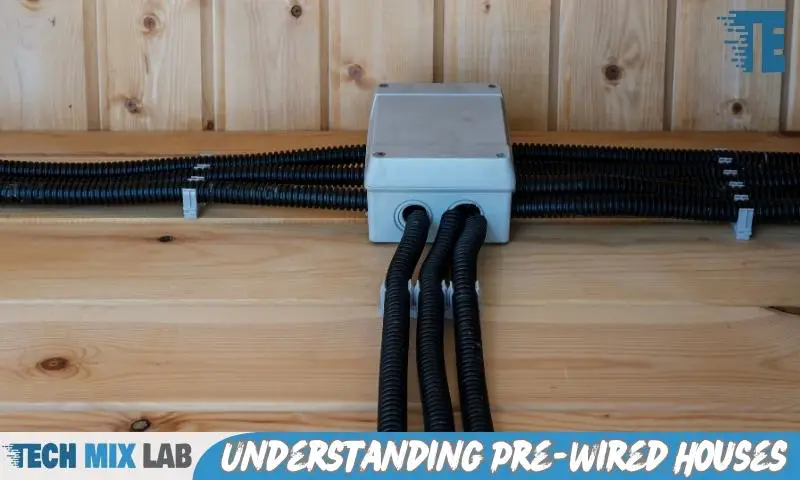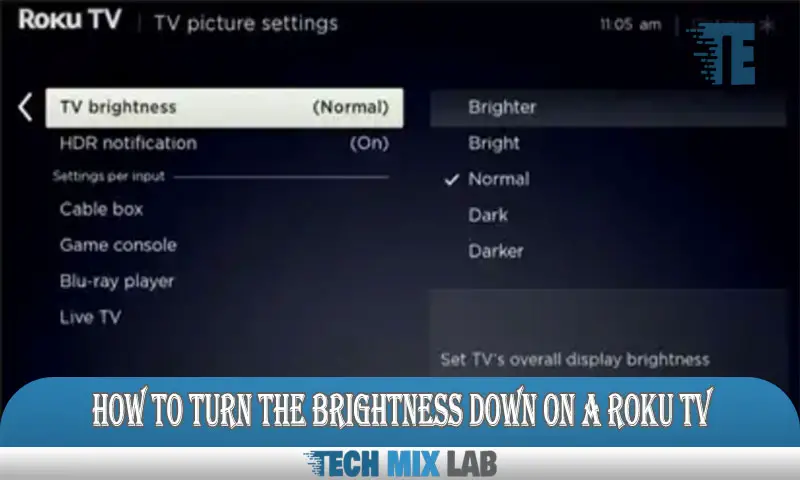To install speakers in a pre-wired house, first, locate the pre-installed wires and connect them to the speakers using a tool. Then, mount the speakers onto the designated areas on the wall or ceiling.
Installing speakers in a pre-wired house can be a great way to enhance your home’s audio system. Many modern homes come with pre-installed speaker wires, making the installation process easier. In order to complete this project, it’s important to locate the pre-installed wires, which are typically found in the ceiling or walls.
Once the wires have been located, they can be connected to the speakers using a specialized tool and then mounted onto designated areas on the wall or ceiling. Proper installation can greatly improve the sound quality of your home’s audio system and help you enjoy music and other media to the fullest.
Understanding Pre-Wired Houses

What Are Pre-Wired Houses?
Pre-wired houses are those that have already been fitted with wires for electric appliances, including speakers before their construction is complete. This means that homeowners don’t need to drill holes or damage walls to install speakers—quite a relief, right?
Pre-wired homes are like a blank canvas waiting for the homeowner to add their personal style.
How Do You Determine If Your House Is Pre-Wired For Speakers?
If you’re not sure whether your home is pre-wired or not, here are a few tips to help you out:
- Look for speaker grills on your ceiling and walls. This is an unquestionable sign that your house is pre-wired for speakers.
- Check the blueprint of the house. If the house is pre-wired, it should be stated in the blueprint of the home.
- Inspect the utility box panel. If it has a label for speakers, then it is very likely that it is pre-wired.
- Contact the builder or the electrician that worked on the house. They can provide you with all the information you need about whether your home is pre-wired or not.
Advantages Of Pre-Wired Houses For Speaker Installation
Having a pre-wired house for speaker installation has many advantages, including:
- Saving time and money as the builders will have completed most of the wiring work for you.
- Having a clean and more professional look with fewer wires exposed since the installation has already been pre-planned.
- Being able to customize the sound system in the home based on your taste and preferences with ease.
- Having reliable performance is better than installing speakers afterward.
- Reducing the damage to the walls, ceiling, or floors that might otherwise occur if wires need to be installed after construction.
Start enjoying your music or surround sound system quickly and easily by getting informed about pre-wired houses. Save money and time and get a clean, professional look to your home with fewer wires, providing top-quality sound and performance that will make you happy.
Choosing The Right Speakers

Factors To Consider Before Choosing Speakers
When installing speakers in a pre-wired house, choosing the right speakers is crucial. Here are some factors to consider before making your final decision:
- Size of the room: The size of the room will determine the power and size of the speakers you need.
- Type of music: Decide what kind of music you will be listening to, as different genres require different types of speakers.
- Speaker placement: Consider where the speakers will be placed. Are they going to be ceiling-mounted, in-wall, or free-standing?
- Budget: Speakers come at different price points, and it’s important to factor in your budget before making a purchase.
How To Compare Different Types Of Speakers
With so many types of speakers available on the market, it can be challenging to choose which one to buy. Here are a few things to keep in mind when comparing different types of speakers:
- Frequency range: The frequency range of a speaker indicates how low and high the speaker can reproduce sounds.
- Sensitivity: Speaker sensitivity refers to how effectively a speaker can convert power into volume. A higher sensitivity rating means the speaker needs less power to produce loud sounds.
- Impedance: Impedance refers to the amount of electrical resistance a speaker provides to the amplifier. Choose a speaker with an impedance that matches your amplifier to get the best possible sound.
- Style and design: Choose a speaker style and design that fit your space and decor.
Matching Speakers To Your Pre-Wired House
Now that you know what to consider when choosing and comparing speakers, it’s time to match them to your pre-wired house. Here are a few tips to make sure everything fits:
- Check your wiring: Make sure the wiring in your home is designed to handle the speakers you have chosen. Older homes may not have wiring that can handle more modern speakers.
- Speaker size: Make sure the speakers you choose fit into the wiring boxes in your home.
- Speaker Location: Check where the wires and wiring boxes are located in your house and make sure the speakers will be placed in an appropriate location for optimal sound quality.
- Testing: Set up the speakers and test them to ensure they work correctly and sound great.
By following these simple tips, you can choose the right speakers for your pre-wired house and enjoy amazing sound quality for years to come!
Pre-Installation Preparations
Are you looking to install speakers in your pre-wired home? It’s a great investment that can improve your home entertainment experience. However, before you start the installation process, there are some pre-installation preparations that you should consider. In this blog post, we’ll discuss the necessary tools you’ll need for speaker installation, the safety measures you should take, and how to prepare the room for the installation process.
Tools Required For Speaker Installation
Before you begin any installation project, it’s essential to have the necessary tools at hand to complete the installation successfully. Here are some tools you’ll need for installing speakers in your pre-wired house:
- Drill and drill bits
- Drywall saw
- Screwdriver
- Fish tape
- Speaker wire stripper
- Wire cutter
- Measuring tape
You can rent or purchase these tools at your local hardware store, or consider hiring a professional to handle the installation process for you.
Safety Measures To Take
Safety should always be a top priority when handling any installation project. Here are some safety measures you should consider before starting the speaker installation process:
- Turn off the electricity: Before starting the installation process, turn off the electricity in the room where you’ll be installing speakers. This step will protect you from electric shocks.
- Wear safety gear: Wear safety goggles, gloves, and a dust mask to protect yourself from dust, debris, and other hazards.
- Use a ladder: If you’ll be installing speakers on the ceiling, use a safe and stable ladder to reach the installation point.
- Read the manual: Always read the speaker installation manual before starting the installation process to reduce the risk of accidents.
By following these safety measures, you can ensure a safe and successful installation process.
Preparing The Room For Speaker Installation
Before installing speakers, it’s crucial to prepare the room to ensure that the installation process is seamless. Here are some steps to follow:
- Choose the optimal location: Identify the best location to install the speakers in the room for optimal sound quality. Measure the distance between the speakers and the seating area to ensure that the sound is evenly distributed.
- Eliminate obstacles: Remove any obstacle that blocks the path between the speaker and the listener. This step will prevent any interference that may affect the sound quality.
- Mark the points where you’ll install the speakers: Use a measuring tape to mark the points where you’ll install the speakers. This step helps to ensure that you install the speakers at the desired location and at the right distance apart.
- Run the speaker wires: Use fish tape to run the speaker wires through the walls or ceiling. Ensure that the wiring is neatly concealed to improve the appearance of the room.
By following these preparations, you’ll have a hassle-free and successful installation process for your speakers.
Diy Guide To Installing Speakers In Pre-Wired House
Understanding Speaker Placement
Choosing the right location for your speakers is crucial to getting the most out of your home audio system. Here are some essential factors to keep in mind:
- The room’s size and layout play a vital role in deciding where to place your speakers. A spacious room may need more speakers, while a smaller room might be okay with just a few.
- Keep your speakers at least 6-10 feet apart. Placing the speakers too close to each other may result in muddy sound quality.
- Avoid placing the speakers in corners, as it may result in bass overload, making the audio sound boomy and overpowered.
- Placing the speakers at ear level may improve the listening experience. It’s always a good idea to test the sound quality by walking around the room before settling on a final location.
Speaker Installation Step-By-Step Process
Now that you know the ideal speaker placement, let’s dive into the installation process. Make sure you have all the tools required, including:
- Speaker wires
- Stud finder
- Drill
- Screwdriver
- Wire strippers
Follow these simple steps to install your speakers in a pre-wired house:
- Identify the correct location for your speakers based on the factors listed in the previous section.
- Locate the pre-wired holes for your speakers in the wall.
- Use a stud finder to ensure there aren’t any studs or electrical wires in the way.
- Based on the identified location, drill the holes for the brackets or mounts.
- Mount the brackets or mounts on the wall using screws and ensure they are tightly secured.
- Strip the ends of the speaker wires and connect them to the speakers’ terminals. Make sure you connect the positive wire to the positive terminal and the negative wire to the negative terminal.
- Carefully insert the speakers into the brackets or mounts and check their alignment.
- Turn on your audio system and test the sound to ensure everything’s working correctly.
Do’s And Don’ts During Speaker Installation Process
Here are some essential do’s and don’ts to keep in mind during the speaker installation process:
Do’s:
- Read the speaker system manual thoroughly before starting the installation process.
- Ensure the speaker wires are correctly connected to the speakers and the audio system.
- Use a stud finder to find any obstacles behind the wall before drilling the holes.
- Test the sound quality before settling on the final speaker location.
- Ask for help if you’re not confident with the installation process.
Don’ts:
- Don’t rush the installation process, as it may result in substandard work.
- Don’t let the speaker wires touch each other, as it may lead to a short circuit.
- Don’t install the speakers in the corners or too close to each other, as it may damage the sound quality.
- Don’t forget to turn off the power before starting the installation process.
- Don’t hesitate to call a professional if the installation process seems too complicated.
Now that you have a better understanding of how to install speakers in your pre-wired house, let’s get started on creating the perfect audio experience.
FAQs
How Can I Choose The Right Speakers For My Pre-Wired House?
Choosing the right speakers involves considering factors such as room size, sound quality, and budget. Look for speakers with a frequency response that matches your taste and choose between in-ceiling, in-wall, or bookshelf speakers depending on your room design.
How Do I Connect My Speakers To My Pre-Wired Home Theater System?
First, you need to identify the speaker wires that are pre-wired from the receiver location to the speaker location. Then, strip the wire ends and connect them to the corresponding inputs on the speaker. Ensure that you maintain polarity between the positive and negative wires.
Do I Need Professional Help To Install Speakers In My Pre-Wired House?
While it’s possible to install speakers in a pre-wired home as a DIY project, professional assistance can ensure proper placement, wiring, and sound quality. Hiring a professional can also help you avoid any damage or issues during installation.
Conclusion
After following the step-by-step guide, you can now enjoy your favorite music and movies with high-quality sound without any hassle. Installing speakers in your pre-wired house may seem daunting, but with the right tools and techniques, it can be completed efficiently and effectively.
Remember to check the wiring and make sure everything is secure and properly connected before testing the sound quality. By taking the time to properly install your speakers, you can enhance your overall audio experience and create a more immersive entertainment space.
With a little patience and know-how, you can easily DIY your speaker installation without having to hire a professional. So, what are you waiting for? Get started and enjoy your newly installed speakers!





